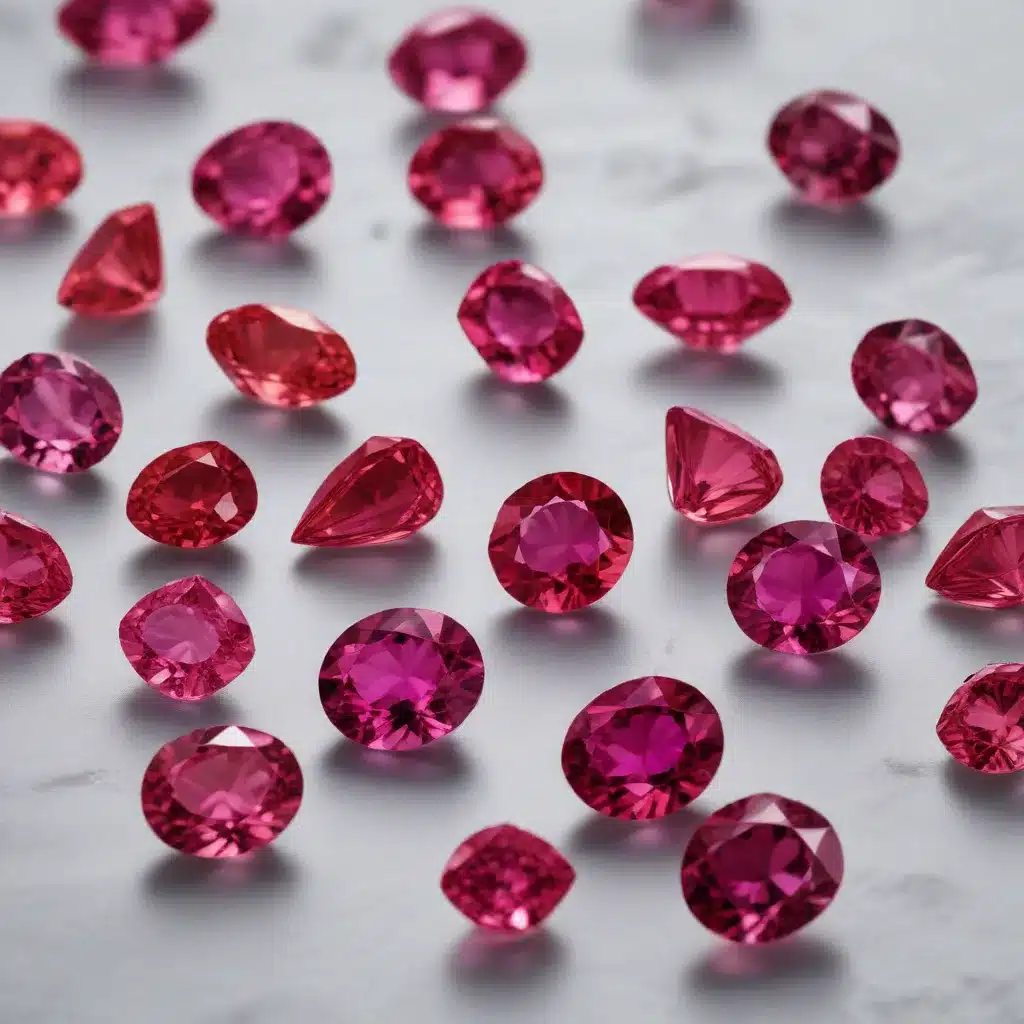
The allure of rubies—those brilliant, fiery-red gemstones that have captivated the world for millennia—is undeniable. Forged deep within the earth’s mantle under conditions of extreme heat and pressure, natural rubies are prized for their rarity, durability, and unparalleled beauty. Yet, the journey to unearth these gemstone treasures is often arduous and environmentally taxing.
Fortunately, the rise of lab-grown rubies has revolutionized the way we experience this classic gem. By precisely replicating the natural conditions that give rise to rubies, scientists have unlocked the ability to cultivate these stunning stones in the controlled confines of a laboratory. The result? Rubies that rival their natural counterparts in both appearance and quality, all while offering a more ethical and sustainable alternative.
At Shelby Gem Factory, we pride ourselves on being at the forefront of this exciting lab-grown gemstone revolution. Join us as we unveil the science behind these captivating creations and explore how they are redefining the very notion of natural elegance.
The Advantages of Lab-Grown Rubies
The allure of lab-grown rubies lies in their ability to provide consistent quality and color—a feat that can be challenging with their mined counterparts. Natural rubies form over millions of years, often incorporating trace elements and imperfections that can result in subtle variations in hue, clarity, and brilliance. In contrast, the controlled growth environment of a laboratory allows scientists to fine-tune every aspect of the ruby’s development, ensuring a level of uniformity that is simply unattainable in nature.
This precision extends to the ruby’s physical properties as well. Lab-grown rubies share the same Mohs hardness (9) as their natural brethren, making them equally durable and scratch-resistant. And by carefully regulating the growth parameters, lab-grown rubies can be produced with exceptional clarity and few inclusions—a desirable trait that can significantly impact a gemstone’s value and brilliance.
The Science Behind Lab-Grown Rubies
The process of cultivating lab-grown rubies begins with a tiny seed crystal, harvested from a natural ruby or synthetically created. This seed is then placed in a specialized growth chamber, where it is exposed to the precise conditions required for ruby formation: high temperature (around 2,000°C) and high pressure (up to 50,000 atmospheres).
As the seed crystal is slowly exposed to these carefully controlled conditions, the ruby begins to grow, layer by layer, in a process known as flux-growth. The specific flux materials used, along with the temperature and pressure profiles, can be adjusted to influence the ruby’s final color, clarity, and other optical properties.
Sophisticated spectroscopic analysis techniques, such as UV-Vis-NIR and Raman spectroscopy, are employed to closely monitor the ruby’s development and ensure it meets the highest quality standards. These analytical tools allow scientists to detect even the slightest variations in the ruby’s chemical composition and crystal structure, enabling them to make real-time adjustments to the growth environment.
Vibrant Hues of Lab-Grown Rubies
One of the most captivating aspects of lab-grown rubies is the vivid, saturated hues they can display. While natural rubies can exhibit a range of red tones, from pinkish-red to deep, blood-red, lab-grown rubies can be engineered to showcase an even broader spectrum of crimson shades.
By manipulating the growth parameters, such as temperature, pressure, and the presence of specific trace elements, scientists can enhance the ruby’s color intensity. This ability to fine-tune the hue allows for the creation of rubies that exhibit a level of vibrancy and saturation that is rarely seen in nature.
The Brilliance of Lab-Grown Rubies
In addition to their stunning color, lab-grown rubies are renowned for their exceptional optical properties. Thanks to their flawless clarity and lack of internal imperfections, these synthetic gems are able to refract and disperse light with unparalleled brilliance.
The precise facet angles and symmetry achieved during the growth process contribute to the ruby’s ability to maximize light performance. This, in turn, results in a truly mesmerizing display of fiery flashes and vivid sparkle—a testament to the meticulous craftsmanship behind these laboratory-created marvels.
Natural Elegance Reimagined
While lab-grown rubies may initially seem like a departure from the natural world, their inherent beauty and timeless elegance have earned them a rightful place alongside their mined counterparts. In fact, many discerning collectors and jewelry enthusiasts have come to appreciate the consistent quality and vibrant hues of these synthetic gems.
Ultimately, the true value of a ruby lies not in its natural or lab-grown origin, but in the joy and wonder it inspires. And with Shelby Gem Factory’s commitment to crafting exceptional, ethically-sourced lab-grown rubies, you can be confident that your journey with these captivating gemstones is one of natural elegance reimagined.
Applications of Lab-Grown Rubies
The versatility of lab-grown rubies extends far beyond the realm of fine jewelry. These remarkable gemstones have also found a place in various industrial and technological applications, where their durability, thermal conductivity, and optical properties make them indispensable.
In the field of optics, lab-grown rubies are used to create highly precise laser components, taking advantage of their ability to efficiently absorb and emit light. Similarly, their hardness and scratch-resistance make them ideal for use in watchmaking, where they serve as pivot points and bearings in delicate timepiece mechanisms.
As the demand for sustainable and ethical gemstone alternatives continues to grow, the future of lab-grown rubies shines brighter than ever. At Shelby Gem Factory, we are proud to be at the forefront of this exciting gemstone revolution, offering our customers the opportunity to experience the natural elegance of rubies in a truly innovative and responsible way.

